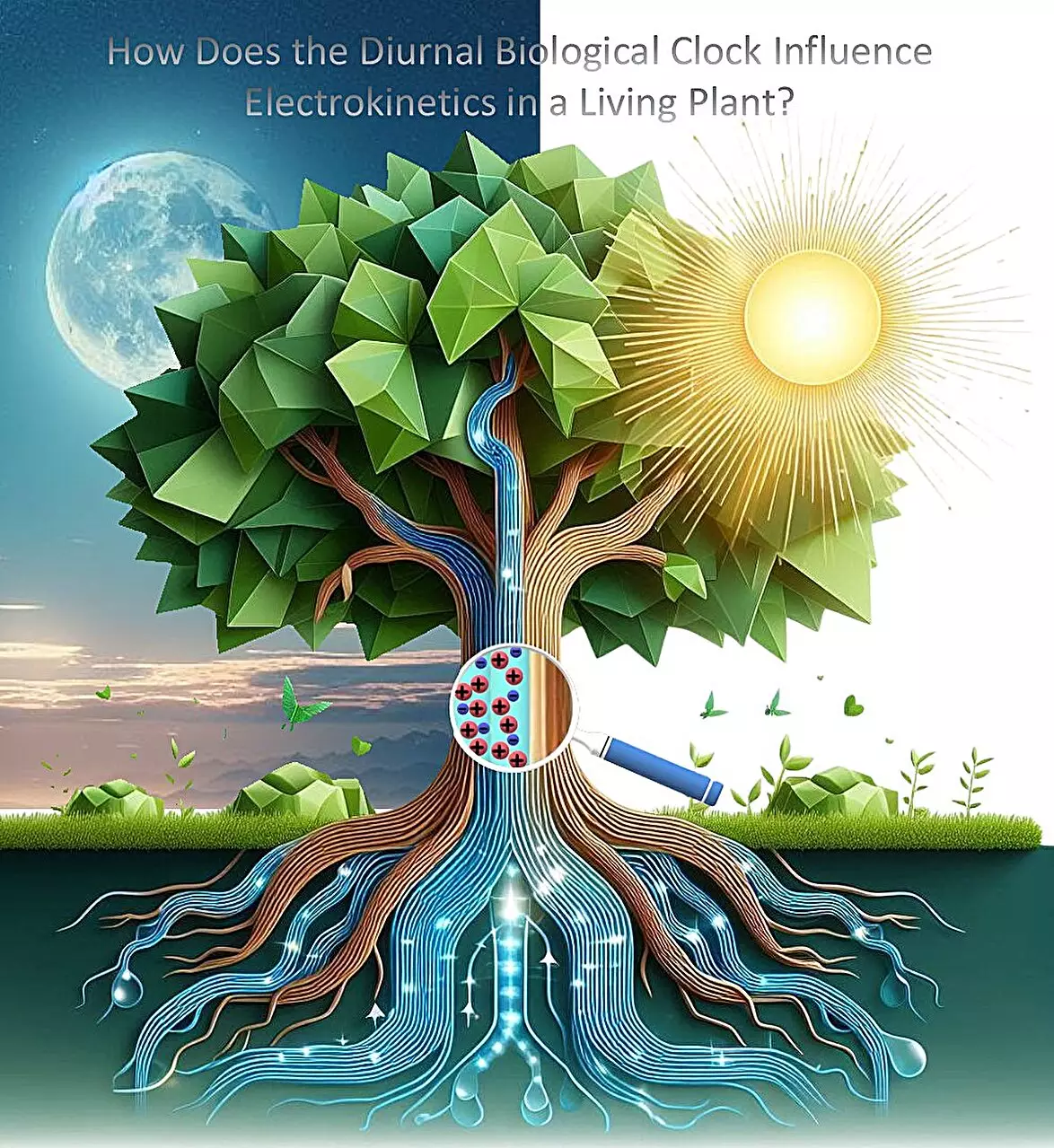Plants have the incredible ability to produce an electric potential as they draw water from their roots to nourish their stems and leaves. This phenomenon presents a unique opportunity to harness renewable energy from plant life. However, it is crucial to consider the influence of the circadian rhythm on this process. The biological clock that guides plants through day and night cycles plays a significant role in shaping their energy production and consumption patterns.
A recent study conducted by researchers from the Indian Institute of Technology Kharagpur delved into the intricate workings of plant energy production. By examining the voltage generated by biological processes in plants, the researchers aimed to uncover the impact of day and night changes on this electric potential. Through experiments involving water hyacinths and lucky bamboo, the team explored how different factors such as ion types, ion concentration, and pH levels in plant fluids influenced electrical potential.
One of the key findings of the study was the correlation between the movement of ions in plants and the daily rhythms of plant life. By quantifying the voltage response linked to ion transport within plants, the researchers unveiled the plant’s ability to regulate fluid flow in alignment with its circadian rhythm. Moreover, the study revealed that the electric streaming potential in plants is amplified by a decrease in ion concentration or an increase in pH levels in plant fluids.
The implications of this research are substantial, as it opens up new possibilities for harnessing electrical power from plants in a sustainable manner. By understanding how plants naturally generate and modulate electric potential, we can explore innovative ways to extract renewable energy without causing harm to the environment. This breakthrough not only sheds light on the hidden electrical rhythms of plants but also highlights the potential for leveraging plant energy as a viable resource for the future.
The study conducted by the researchers from the Indian Institute of Technology Kharagpur sheds light on the untapped potential of plants as a source of renewable energy. By unraveling the intricate relationship between plant biology and electricity generation, we can pave the way for a greener and more sustainable energy future. It is essential to continue exploring the possibilities offered by plant-based energy sources and to leverage nature’s inherent capabilities for the benefit of society as a whole.


Leave a Reply
You must be logged in to post a comment.